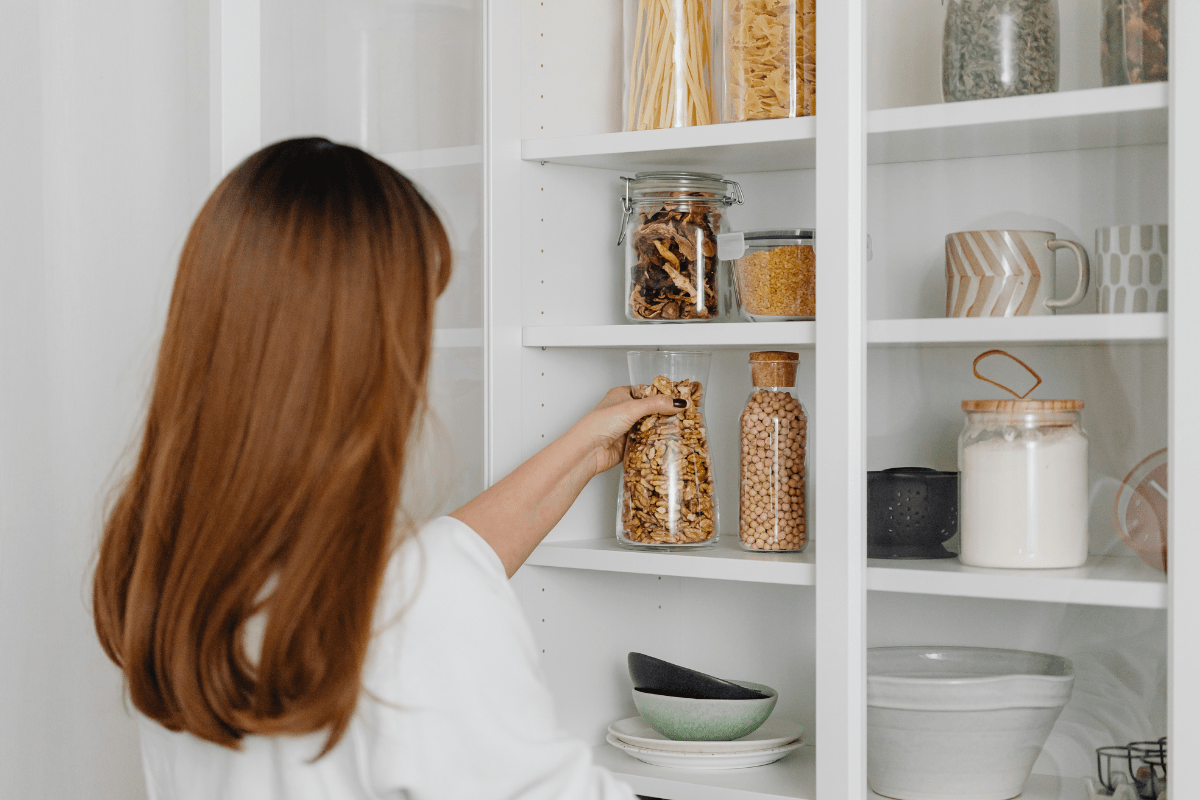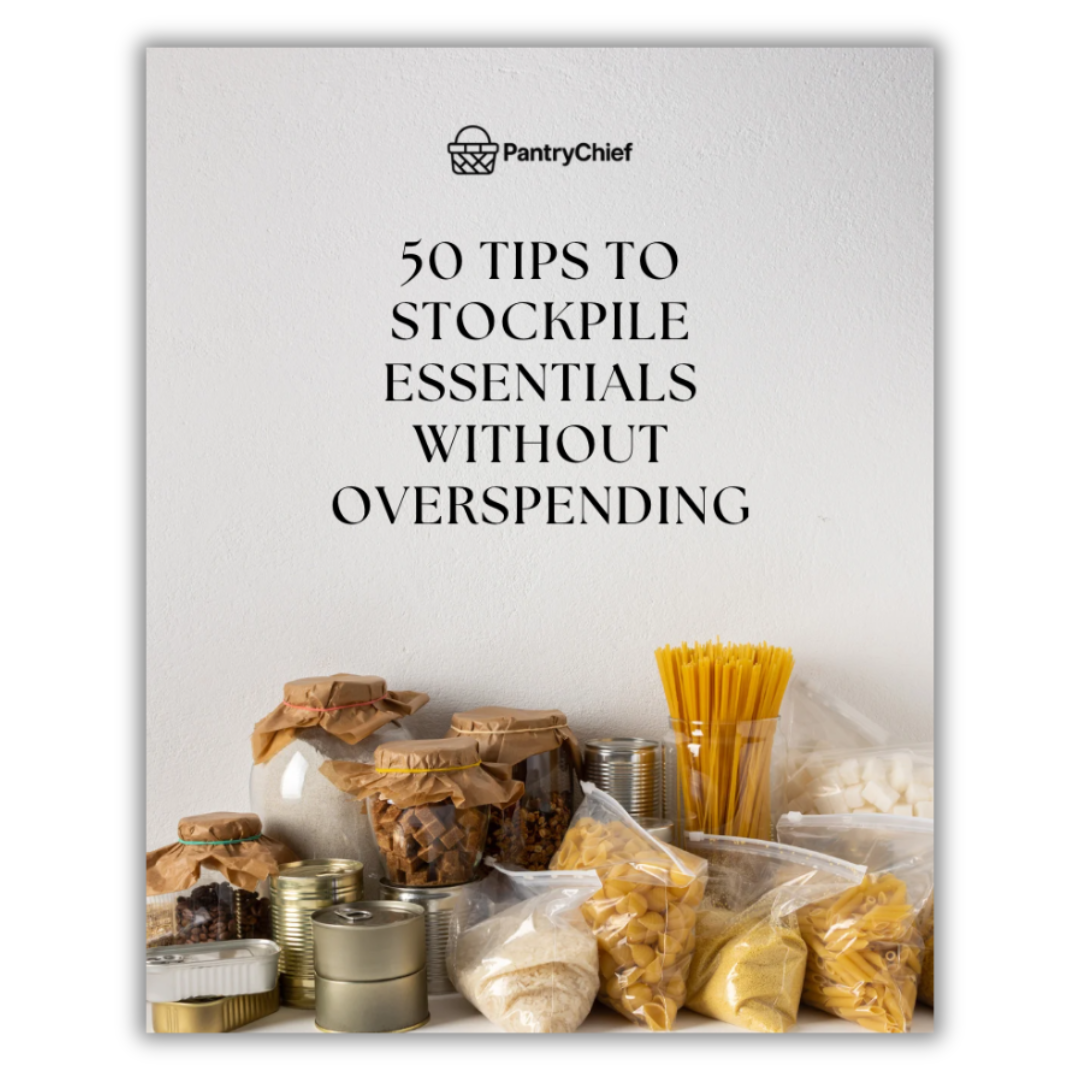The Ultimate Pantry Organization Guide to a Functional, Clutter-Free Pantry

Pantry organization can turn daily chaos into calm—so why does your pantry still feel like a tornado hit it? Whether you stock up at big stores or cook every night, a messy pantry wastes time and money. In this guide, I share clear, tested strategies to fix that for good. First, you'll learn how zones, clear containers, and labels save space and prevent duplicate buys. Also, we cover smart tools like turntables, shelf risers, and stackable bins to boost access. Moreover, you'll get family-friendly tips for handling overstock and messy outliers so systems last. I draw on practical advice from organizing pros and real-life kitchens to give you steps that work. Finally, you'll leave with a simple plan, shopping list, and quick wins you can do today. Read on to reclaim your shelves, streamline meal prep, and enjoy a clutter-free pantry that runs smoothly. Start now and feel the calm.
Plan & Zone Your Pantry
Effective pantry organization starts with a simple plan. First, map the space and decide where each type of food should live. Then, set clear rules for what stays within reach and what goes into overflow. Zoning reduces daily friction and helps everyone in the house keep order.
Map and Define Zones
Begin by assigning functional zones for predictable storage. For example:
- Snacks: open-front bins for kids to grab quickly.
- Baking: grouped together with measuring tools nearby.
- Canned goods: on a single shelf or can rack for easy rotation.
- Spices: in a drawer or on tiered risers for visibility.
- Bulk/overstock: one dedicated upper shelf or tall bin.
That Practical Mom demonstrates this zone-based approach in her video, which shows how pantry zones hold up in real family life (watch here).
Handle Overstock and Outliers
Next, create an overstock or overflow zone. Therefore, the main zones stay tidy even after big grocery runs like Costco. Also, keep an ‘outliers’ spot for odd items that don’t fit any zone. This keeps your system realistic and low-effort.
Plan for Family Use
Design the pantry with everyday users in mind. For example, place snack bins at kid height. Meanwhile, keep adult-only bulk shelves higher up. Furthermore, clear rules make it easy for children to put things back correctly. As a result, the household maintains order more often.
Take Inventory Visually with Clear Containers
Finally, use clear containers to see quantities at a glance. Food52 recommends clear containers to prevent duplicate buys (read more). In addition, label containers and use shelf risers or turntables for hard-to-reach items. This makes pantry organization faster and smarter.
In short, plan your zones, manage overstock, and make sightlines simple. Consequently, your pantry will be easier to use and easier to keep neat.
Storage Solutions That Actually Work
Choose reliable tools and layouts rather than gimmicks. For effective pantry organization, the right containers, shelving add-ons, and specialty racks turn wasted space into usable storage and keep frequently used items accessible. Therefore, focus on durable products and simple systems that you will actually use every day.
Core organizer categories
Start by grouping products so you can shop with a purpose. The Container Store divides useful items into clear categories: dry food storage, spice organization, bins & baskets, turntables, and shelf organization. See their pantry organizers for examples and sizes.
Turntables and lazy Susans
Turntables are a game-changer for condiments and small jars. For example, a lazy Susan makes it easy to reach a sauce in the back without moving everything else. Also, they reduce clutter and speed up meal prep.
- Best for: oils, sauces, small bottles.
- Tip: use one per shelf or stack one inside a bin for corralled rotation.
Clear airtight containers and labeling
Clear airtight containers help you see inventory at a glance, so you avoid duplicates and stale food. Food52 recommends moving cereals, grains, pasta, and snacks into clear containers and collecting them gradually. Read Food52’s guide for practical tips. Furthermore, add simple labels with dates to track freshness.
Shelf risers, tiered organizers, and vertical solutions
Shelf risers create stadium seating for spices and jars, which makes every label visible. Moreover, tiered organizers free up vertical space and prevent stacks from toppling. For small items, consider over-the-door shoe racks for packets and a dedicated spice rack for bottles.
Specialized racks, wheeled bins, and stackable open-front bins
Canned-goods racks provide first-in/first-out access, so older cans get used first. Meanwhile, wheeled or slide-out bins make floor-level storage easy to pull out. In addition, stackable open-front bins keep snacks visible and simple to grab.
- Canned racks: improve rotation and reduce crushes.
- Wheeled bins: ideal for heavy bulk items, as Food52 suggests.
- Open-front bins: perfect for family-friendly pantry snacking zones.
Finally, mix these tools to create pantry organization that lasts. With these practical solutions, your pantry becomes both tidy and usable every day.
Maintenance, Labeling & Real-World Routines
A one-time overhaul won't stay tidy without simple systems for maintenance. Therefore, combine clear labeling, rules for new purchases, and routines that match family life to keep pantry organization durable. Below are practical, family-friendly steps you can use right away.
Labeling and visibility
Label everything. For example, mark containers with contents and the date opened or expiration. Food52 recommends using simple tape and a marker for dates and contents, and that small step reduces waste and confusion. Also, use clear containers when possible because they let you see stock at a glance.
Contain small items and packets
Seasoning and sauce packets often disappear into the gap between larger items. Instead, corral them in a recipe-box or clear container so they stay visible and usable. This Food52 tip saves money and time during meal prep.
Hooks, doors, and vertical solutions
Make use of cabinet walls and doors. Add hooks inside cabinet walls for oven mitts or utensils. Moreover, use an over-the-door shoe rack to store snacks, packets, or small jars. These fixes add storage without remodeling and are recommended by Food52 and Container Store guides.
Systems that survive family life
Adopt sustainable routines that fit your household. That Practical Mom shows realistic pantry zones and rules for overstock and outliers. Consequently, plan for big shopping trips and kids grabbing snacks by setting overflow zones and clear rules for returning items to main zones.
Weekly checks and FIFO
Schedule quick weekly checks to replenish or remove items. For example, move overflow boxes back into the main area or discard expired goods. Furthermore, use visible containers and a canned-goods rack to make FIFO (first-in, first-out) easy and obvious.
Start small and iterate
- Buy organizers gradually; you do not need everything at once, as Food52 advises.
- Choose a labeling method everyone follows.
- Prioritize fixes that reduce daily pain points first.
Finally, for inspiration and products, see Container Store’s pantry organizers (https://www.containerstore.com/s/kitchen/pantry-organizers/12) and That Practical Mom’s video on sustainable systems (https://www.youtube.com/watch?v=aMtNR-2thcU). With these steps, your pantry organization will stay useful and realistic for years to come.
Conclusion
Pantry organization works when you plan, pick smart tools, and keep simple routines. First, map zones for snacks, baking, cans, spices, and overstock so items are easy to find. Next, choose durable solutions like clear airtight containers, turntables, shelf risers, and wheeled bins to save space and time. Also, label everything and use clear containers to spot low stock and avoid waste. Furthermore, set family rules and weekly checks so the system survives real life. For guidance, see Container Store’s pantry organizers and That Practical Mom’s video for practical demos. Finally, start small, add organizers slowly, and stick to a labeling method that everyone follows. Take one shelf this week and try these ideas; then share your wins or questions. Would a calmer, faster kitchen change your week? Also, check Food52 for container tips and simple label ideas to avoid waste and save money today and feel the difference.
